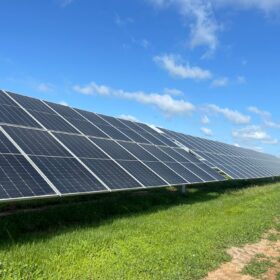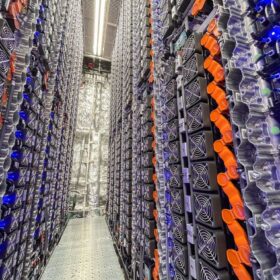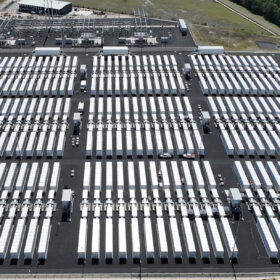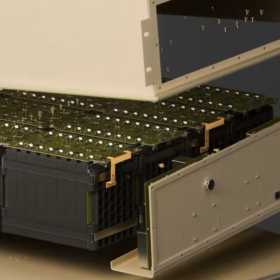The installation, carried out by the skilled team at Chris & Co, Kristy’s local electrical and solar installation company, and was completed in record time—just three hours for both the inverter and battery.
The new Tesla Powerwall 3 is a significant leap forward in home energy storage solutions. “It’s much smaller than the Powerwall 2,” Kristy remarked, noting its compact design despite its advanced features, which includes an in-built solar inverter.
The system is fully operational and integrated with the Tesla app, allowing seamless monitoring and control. Kristy Hoare has affectionately named her new battery “Wall-E.”
“My main motivation for installing the Tesla Powerwall 3 is to enhance resilience during severe weather events—power outages are the last thing you want in uncertain times. Plus, it’s a smart investment. By combining it with solar, I’ll save even more on power bills than with solar alone.”
Kristy shared her excitement about the new Powerwall’s potential, citing its competitive price point and the innovation it brings to renewable energy. “This product raises the bar for other manufacturers, making the shift to renewable energy more appealing for homeowners,” she said.
The Tesla Powerwall 3 is set to revolutionise energy storage in New Zealand, offering more efficient, sustainable solutions for households nationwide.
Powerwall 3 has the same 13.5 kWh of energy storage as Powerwall 2, the game-changer is its power output. Powerwall 3 can deliver up to 11.04 kW—double the output of Powerwall 2. With improved power output, it can handle more devices simultaneously, ensuring a smoother backup experience during outages
The built-in inverter simplifies the installation process and reduces the need for additional components, cutting costs and installation complexity. The Powerwall 3 supports up to 20kW of solar.
Tesla has designed the Powerwall 3 to withstand tough conditions. It can be submerged in water up to 600 millimetres, making it more resilient in areas prone to extreme weather with the possibility of mild flooding.
The Powerwall can provide stored solar energy to an EV through your home electrical panel.
The price is competitive with the cheap Chinese battery brands, plus with the inverter integration it will take less time to install, reducing the cost even further.






By submitting this form you agree to pv magazine using your data for the purposes of publishing your comment.
Your personal data will only be disclosed or otherwise transmitted to third parties for the purposes of spam filtering or if this is necessary for technical maintenance of the website. Any other transfer to third parties will not take place unless this is justified on the basis of applicable data protection regulations or if pv magazine is legally obliged to do so.
You may revoke this consent at any time with effect for the future, in which case your personal data will be deleted immediately. Otherwise, your data will be deleted if pv magazine has processed your request or the purpose of data storage is fulfilled.
Further information on data privacy can be found in our Data Protection Policy.